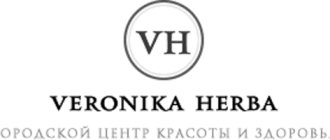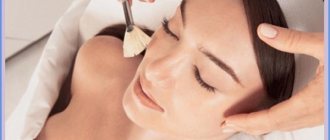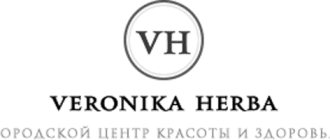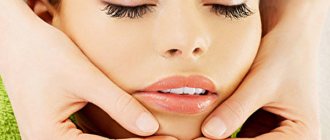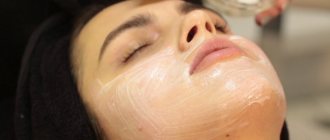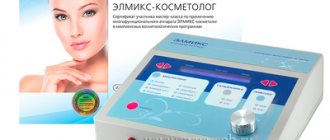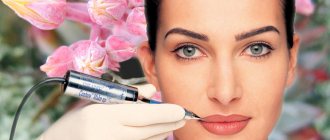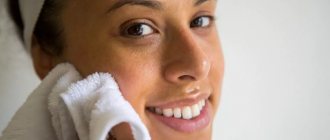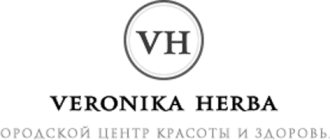From this article you will learn:
- What is a glycolic facial peel?
- How is glycolic facial peeling performed in beauty salons?
- What is glycolic facial peeling like?
- What are the indications and contraindications for glycolic facial peeling?
- What are the advantages and disadvantages of glycolic facial peels?
- What side effects can you expect after a glycolic facial peel?
- How often can you do a glycolic facial peel?
- How much does glycolic facial peeling cost in beauty salons?
- How to make a glycolic facial peel at home
- How to do glycolic facial peeling at home step by step
Recently, acid peeling has been in great demand. This cosmetic procedure has many advantages: it tightens and rejuvenates the skin, reduces visible wrinkles, freckles and age spots. Acid peels are performed in professional salons, but today some of them can be done at home without the help of specialists. In our article we will tell you what glycolic facial peeling is, consider the benefits of this procedure, and introduce you to the rules of skin care after it.
What is a glycolic facial peel?
This chemical facial peel is performed with glycolic acid. Previously, this acid was made from sugar cane. Now the production is based only on artificial drugs. The solution affects the topmost layer of skin (epidermis). Fruit acid kills old cells while stimulating the functioning of others at deeper levels. Thanks to this, we observe a noticeable rejuvenation effect. The face acquires a healthy color and becomes fresher. The condition of the skin improves.
Let us repeat that glycolic acid belongs to fruits. In nature, it can be found in sugar cane and unripe grapes. Thanks to its composition, it is able to quickly penetrate the skin, activating rejuvenation processes.
Glycolic peeling for the face at home involves treating the skin with a special composition containing acid. During the procedure, dead skin cells, impurities, and toxins are removed.
Under the influence of the solution the following occurs:
- collagen production;
- stimulation of skin cell regeneration;
- activation of internal processes in the body;
- cleansing the upper layers of the epidermis;
- decreased sebum production;
- reduction of wrinkles;
- skin protection from ultraviolet radiation;
- moisturizing the skin;
- increasing skin tone;
- reducing the visibility of age spots;
- reducing the number of acne.
During peeling, the top layer of skin is affected. The destruction of dead cells provokes the production of natural collagen. Due to this, skin renewal and regeneration occurs. The first visible effect is noticeable a couple of hours after the procedure.
Read the material on the topic: Chemical peeling of the face: your skin will breathe a new breath!
Peeling in summer
✹❀
There is still an opinion that chemical peelings are impossible during periods of high solar activity. Indeed, in some cases it is undesirable to perform peeling in the summer. However, if you choose the right chemical agents and home care products. Then, by performing summer peeling, cosmetologists can successfully solve a number of aesthetic problems in the summer.
Criteria for choosing the type of chemical peeling:
- indications and planned depth of skin damage;
- mechanism of action of the peeling composition;
- contraindications for peeling;
- the patient’s lifestyle (bad habits, social status);
- presence of concomitant diseases;
- the patient's real wishes;
- patient requirements for the terms and conditions of the post-peeling period.
How is glycolic facial peeling performed in beauty salons?
- Preparation.
If you are doing a glycolic peel for the first time, you need to prepare your skin in advance for the effects of the active substance. To do this, apply products with one of the acids to your face every evening: citric, mandelic or glycolic. Almond is weaker than the others, so it can be safely used to treat sensitive skin.
- Peeling.
The procedure begins with cleansing the skin of impurities and cosmetics. Next, the specialist proceeds directly to peeling. The acid is applied to the forehead, chin, nose and cheeks. The area around the eyes should remain untouched.
The exposure time of the drug ranges from 2 to 15 minutes. The exact period should be selected by a cosmetologist, taking into account the sensitivity of the epidermis and the concentration of acid in the chosen product. During the procedure, you must carefully monitor the skin's reaction. If redness, itching and burning begin, a specialist should remove the mixture.
Glycolic facial peeling is removed with a neutralizer. After this, the skin should be rinsed with cold water and a nourishing mask should be applied.
- Recovery phase.
A nourishing mask after the procedure is enough for the skin to recover. However, if desired, you can use a sedative. Choose formulations with wheat oil, jojoba oil or grape seed extract.
To avoid negative consequences from the procedure, follow the following rules for further skin care:
- During the recovery period, you should stop using decorative cosmetics.
- It is also recommended to avoid visiting baths and saunas.
- To ensure that glycolic acid facial peeling gives the desired effect without skin irritation, apply a strong sunscreen before sun exposure.
Read material on the topic: Fruit peeling: in a beauty salon and at home
How many procedures are needed
To obtain the expected and lasting effect, it is necessary to perform a series of at least 4, and preferably 8 procedures with an interval of 14 days. This course of treatment can be repeated twice a year.
To reduce the risk of complications, the first treatments in a series should be at lower acid concentrations. Particular care should be taken with dry skin and prone to telangiectasia (dilated blood vessels). Chemical peels performed with glycolic acid are safe, and the risk of complications and side effects after it is very small (however, the higher the concentration of acid, the more the risk increases). With high acid concentrations and low pH, there is a risk of side effects, i.e. irritation, inflammation, pigmentation disorders, crusting, and even scars. Therefore, it is so important that the procedure is performed by professional cosmetologists. Diluted glycolic acid works more gently (of course, this depends on the proportions). The duration of the facial peeling procedure with glycolic acid is from 1 to 10 minutes.
Bionics has different concentrations and pH of glycolic acid, the most commonly used are: 35%, 50%, 70%, and their pH ranges from 1.6 to 0.6.
35% — 2.8 pH 45% — 2.0 pH 55% — 1.0 pH 70% — 0.5 pH
Of course, the choice of acid concentration is determined by the cosmetologist individually. At low pH, glycolic acid stimulates exfoliation and cell renewal; at higher pH, it only provides a moisturizing effect. Glycolic acid comes in two forms: gel (it works more gently, the acid is released gradually, is well tolerated by people with sensitive skin or acne), and causes only mild irritation. An aqueous solution of glycolic acid is very quickly absorbed by the stratum corneum of the skin. This form of glycolic acid peel is used for people who require intensive skin cleansing.
Glycolic facial peeling with a concentration of 20% and 35% is used for superficial exfoliation, the procedure should be repeated in several stages with an interval of 14 days. This type of peeling allows you to restore radiance and a fresh look to the skin (increases tone, elasticity, eliminates fine wrinkles and excessive dryness of the skin). It is also performed to thoroughly cleanse the skin.
And glycolic peels with a concentration of 50% and 70% exfoliate the deep layers of the skin, showing a strong and quick effect.
Due to the possibility of the appearance of age spots, peeling is not recommended in the summer. This type of peeling can be performed on people with any skin phototype, as well as people with dry and sensitive skin (of course, the concentration should be lower, the pH higher, a mild acid formula is also important).
Types of glycolic peeling for the face
There are two types of glycolic peeling:
- surface (with acid content less than 40%);
- aggressive (composed of 40–70% acid).
How are these two procedures different?
- Superficial peeling.
During the session, the upper layers of the epidermis are affected. Recovery is accompanied by redness of the skin. This is normal and traces should disappear after 48 hours. It is convenient to perform such a glycolic peel a few days before an important event.
- Aggressive peeling.
It affects the deeper layers of the skin, eliminating the problem of acne and post-acne and reducing pigmentation. This glycolic facial peel is suitable for women 30 years and older. After the procedure, pain, peeling and hyperemia are possible.
Recommended articles on the topic:
- How to properly care for your skin
- How to remove wrinkles on the face: the most effective methods
- Microcurrent facial therapy is a beneficial treatment for your skin
✹❀❄
Jessner peeling is a classic combined mid-superficial peeling, the activity of which is determined by the ingredients it contains. Lactic and salicylic acids, as well as resorcinol. The effectiveness of Jessner peeling depends on the procedure technique: the more layers of peeling composition are applied. The deeper the penetration will be. This allows the doctor or cosmetologist to individually select the number of layers - from 1 to 8. For each specific patient, thus achieving an optimal result. Peeling causes active large-plate peeling and has a good keratolytic effect. Due to this, it is effective for hyperkeratosis, pronounced age-related changes and skin texture disorders.
Indications and contraindications for glycolic facial peeling
Professionals say that this peeling option is indicated for:
- preparation for plastic surgery or other complex beauty procedures;
- significant pigmentation, acne, pimples, post-acne, comedones;
- the presence of small wrinkles, folds and other age-related changes;
- ingrown hair problem;
- hyperkeratosis;
- dry skin;
- presence of large pores on the face;
- deep acne scars;
- scars, stretch marks;
- molluscum contagiosum.
Glycolic peeling for the face is a completely safe procedure, but experts advise paying attention to contraindications.
It cannot be done in the following cases:
- In spring or summer.
- If you are pregnant or breastfeeding.
- If there are warts in the area of the face where peeling is planned.
- With herpetic disease in the acute stage.
- With telangiectasia.
- If you have recently been in the sun for a long time or have been tanning.
- If there are wounds, scratches, or inflammation at the site of the intended peeling.
- Brunettes with dark skin and dark eyes.
- If you suffer from intolerance to one of the elements of the mixture. To ensure that glycolic facial peeling does not have negative consequences for the skin and the body as a whole, do an allergy test before the procedure.
- For rosacea.
- After chemotherapy or hormonal therapy.
- For severe photosensitivity of the skin.
- After microdermabrasion treatment.
- For vascular problems.
- After recent hair removal.
- When using retinoids.
Read material on the topic: Almond peeling for the face: features of the procedure
Advantages and disadvantages of glycolic peeling for the face
Pros of glycolic peeling:
- The first effect will be noticeable within a few hours after the procedure.
- Rapid restoration of facial skin.
- Solves many problems: stops aging, eliminates various defects, unevenness, wrinkles. Facial rejuvenation occurs.
In the photo below you can compare your face before and after glycolic peeling.
Disadvantages of the procedure:
- After the session, peeling and redness of the skin is possible. Their duration ranges from several hours to a couple of days.
- More significant consequences are swelling and the appearance of crusts on the face. You should consult a cosmetologist about treatment.
- In rare cases, the effect of glycolic peeling does not occur.
- High price for a one-time session.
- Some girls complain that after the procedure, skin pigmentation and other serious abnormalities begin.
Reviews of facial peeling with glycolic acid can be found on the Internet.
Read material on the topic: Depigmenting peeling: everything you wanted to know about it
Almond peeling
✹❀❄
Superficial almond peeling is in constant demand among clients of beauty salons. This is due to its many benefits. Almond peeling has a moisturizing, stimulating and antioxidant effect and is ideal for combating the initial signs of skin aging. Professional almond peeling Medic Control Peel has an additional antimicrobial effect, therefore it is often used to treat problem skin with signs of acne. The mandelic acid molecule is quite large, which determines the gentle effect of the peeling composition on the skin and almost completely eliminates the risk of developing post-peeling hyperpigmentation. Delicate almond peeling is recommended for year-round use for patients with skin of any type. Including dark skin by stimulating the regeneration of young cells of aesthetic medicine by a cosmetologist.
Side effects of glycolic facial peels
The glycolic facial peel procedure may bring some side effects and complications. Usually, negative consequences arise if a low-quality drug was used, as well as if the choice of exposure time for the product was unsuccessful.
Possible problems:
- Swelling of the skin.
This phenomenon becomes noticeable a few hours after peeling. The swelling should go away on its own, but in the future you should perform the procedure more carefully.
- Burns.
Symptoms include severe burning of the skin and significant redness. To solve the problem, wash your face with cold water and apply a soothing cream.
- Allergic reaction.
Glycolic facial peels may cause an allergic reaction. To avoid this, take a test in advance to identify intolerance to the elements of the drug. The test is as follows: a little acid is placed on the bend of the elbow or wrist and left for 7-10 minutes.
You are allergic if you experience:
- burning;
- redness;
- swelling and itching at the site of exposure to the solution.
If you have at least one of the listed symptoms, this procedure cannot be done.
- Dark spots.
If you are prone to pigmentation, peeling may cause dark spots to appear.
- Dryness.
Negative consequences such as dryness and flaking are also possible. If your skin is prone to this, you should reduce the acid concentration, and after the procedure, generously lubricate your face with moisturizer.
If you are unsure whether to do a glycolic peel, look at photos and reviews about the procedure on the Internet.
Read material on the topic: Retinoic yellow peeling done by Hollywood stars
How much does glycolic facial peeling cost in beauty salons?
The cost of one procedure is 1500–5000 rubles. It depends on the price at which glycolic acid is purchased for facial peeling, as well as on the level of the establishment and the qualifications of the specialist. The total cost of the course is at least 7,500 rubles.
Such a high price for glycolic facial peeling is fully justified by the good results that clients receive.
Before going to the doctor, be sure to evaluate the quality of the clinic based on reviews from previous visitors. For those who are not ready to trust doctors, there is a way to do the peeling yourself.
Read the material on the topic: Ultrasonic peeling of facial skin - a pleasant and beneficial procedure for your skin
How to make a glycolic facial peel at home
Before you begin the home procedure, you will need to purchase the following products:
- degreasing lotion;
- soothing cream;
- peeling agent;
- rich cream to moisturize the skin.
You need to buy glycolic acid for facial peeling (with a concentration of 30%). If you are doing the procedure for the first time, you should choose less concentrated formulations. Large amounts of acid can damage the skin, causing irritation and other problems. The increase in the percentage of active ingredient in the drug should be gradual. The first peeling lasts no more than one minute.
You don’t have to buy a ready-made product at the pharmacy, but make it at home from natural ingredients.
You will need:
- a tablespoon of cane sugar;
- freshly squeezed lemon juice;
- half a glass of mineral water.
All products must be mixed together until smooth. The solution should have the consistency of syrup. Gently apply the mixture to the skin using your fingertips. Then wait 7-10 minutes and wash it off with warm water. This mask is suitable for more frequent use than regular glycolic peeling. The optimal time interval between procedures is 3-4 days. In total you will need to complete 10–12 sessions. In the future, you will be able to determine how long you need to keep the mask on your skin for maximum results.
Before the procedure, we advise you to study reviews from cosmetologists about glycolic facial peeling at home, the process itself, and the rules for choosing products at the pharmacy.
Read material on the topic: Gas-liquid skin peeling - beauty without pain and injections
Milk peeling
✹❀❄
Other popular peeling preparations are formulations based on lactic acid. They are characterized by high penetrating ability, which allows their use in patients with severe hyperkeratosis caused by both unfavorable exogenous factors and skin aging. Due to the fact that lactic acid is a component of the natural moisturizing factor of the epidermis. Milk peeling interacts very delicately with the skin and maintains a high level of moisture. Recommended for the correction of cosmetic defects, dry and aging skin, aesthetic medicine.
Stages of glycolic facial peeling at home
Homemade facial peeling is performed in five stages:
- Skin cleansing.
First, you need to remove all cosmetics from the surface of your face and wipe your skin with a degreasing lotion. Dirty skin interferes with the acid's effects.
- Application of the product.
You can apply the peeling agent with a regular cotton pad. The sequence is as follows: forehead, nose, cheeks, chin. Avoid the area around the eyes and lips. Glycolic facial peeling lasts up to 5 minutes. If itching and excessive burning of the skin begin, redness and swelling have formed, the procedure must be completed.
- Neutralization.
Next, a slightly alkaline solution (neutralizer) is used. Dip a cotton pad into it and wipe the skin thoroughly.
- Completion of the procedure.
Wash your face with cold water. Salon procedures are performed using special solutions, but we can assure you that clean running water works just as well. This stage is performed to restore the water-salt balance of the skin, as well as to eliminate dryness and flaking.
- Soothing care.
Glycolic facial peeling is completed with the application of a moisturizing mask. Over the next few days, moisturize your skin generously with creams. During the recovery period, refrain from using decorative cosmetics.
During the course of glycolic peeling, exclude solarium, bathhouse and sauna. High temperatures can provoke negative consequences.
Each glycolic facial peeling session should be completed with a soothing compress. To prepare it, it is better to use natural ingredients (medicinal herbs). For example, to prepare a solution with celandine, pour boiling water over it and put on fire (for 5–7 minutes). Wait for the broth to cool down. Place the resulting paste on the skin and leave for 20 minutes.
You can also make a decoction of green tea, which is prepared according to the same principle as the celandine solution.
Read material on the topic: How to care for facial skin: home care and salon treatments
❄
The principle of action of TCA peeling is based on the pronounced keratolytic and stimulating effect of trichloroacetic acid. The depth of penetration of the peeling composition is determined not only by the concentration of acid in it. But also the number of layers applied to the skin. Moreover, as soon as the application of peeling is completed, its penetration into the tissue also stops. Because trichloroacetic acid is quickly neutralized in the skin layers, causing protein coagulation. TCA peeling ensures renewal of the epidermis, stimulates repair and metabolism processes, which helps improve skin texture. As well as correction of wrinkles, various types of scars (post-traumatic, post-operative, post-acne) and other disorders of the skin relief. Trichloroacetic acid does not have a systemic effect on the body.
Where to sign up for glycolic facial peeling in Moscow
Nowadays, you no longer have to spend a lot of time performing complex and unpleasant procedures at home. It is much easier to seek help from real professionals - the Veronika Herba beauty and health center, equipped with effective and modern equipment.
Why clients choose Veronika Herba Beauty and Health Center:
- This is a beauty center where you can take care of yourself at a reasonable cost, while your face and/or body will be treated not by an ordinary cosmetologist, but by one of the best dermatologists in Moscow. This is a completely different, higher level of service!
- You can receive qualified help at any time convenient for you. The beauty center is open from 9:00 to 21:00, seven days a week. The main thing is to agree with your doctor in advance on the date and time of your appointment.
Sign up for a consultation with a specialist by phone +7 (495) 085-15-13
, and you will see for yourself!
